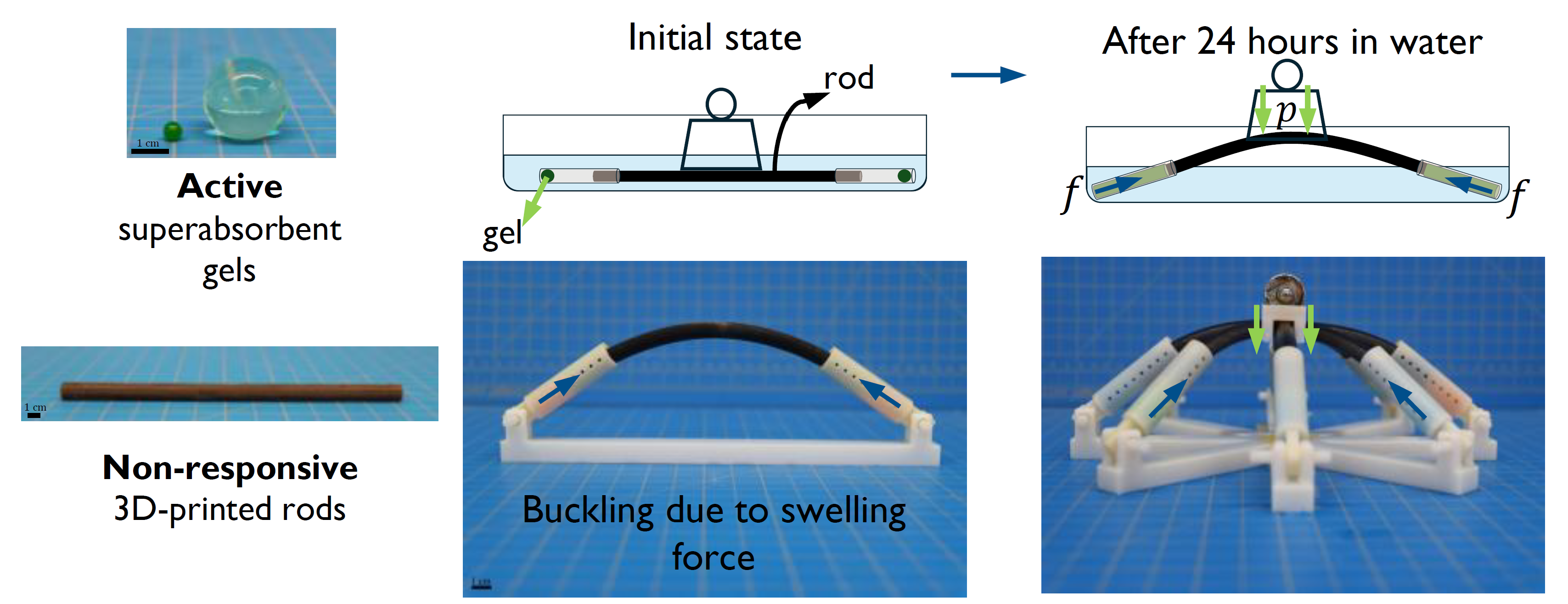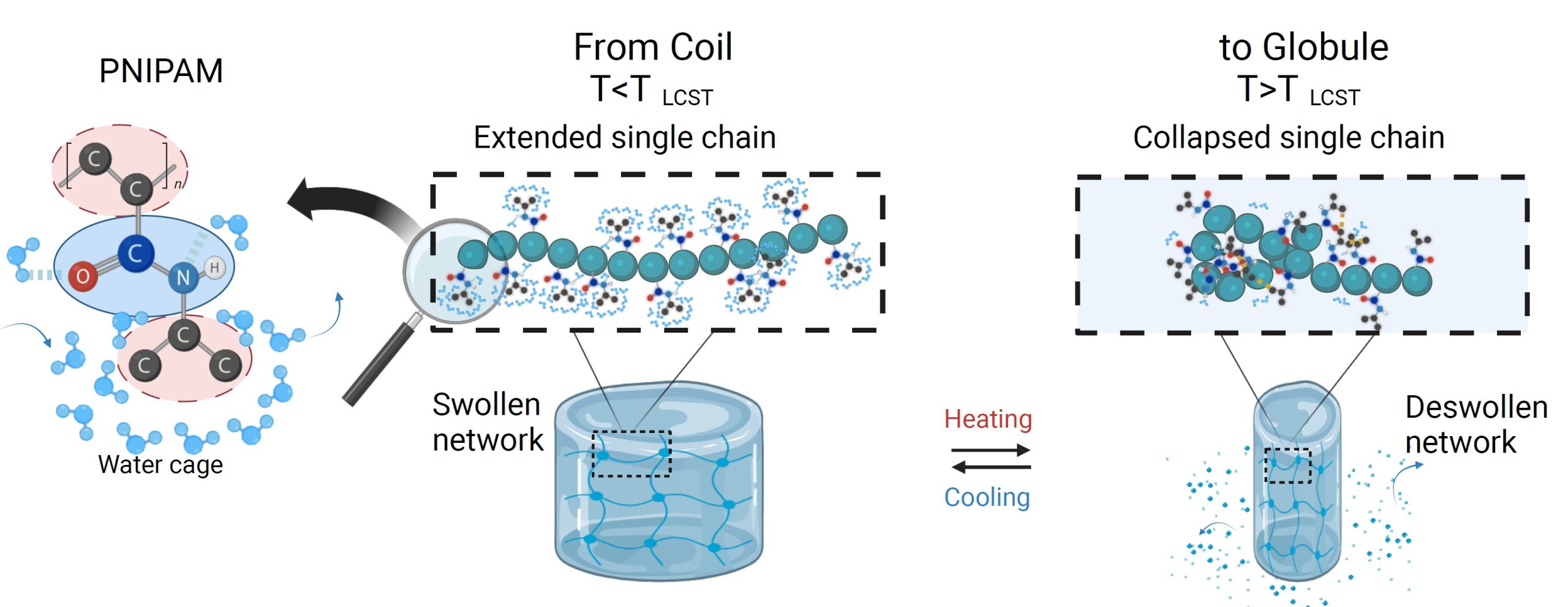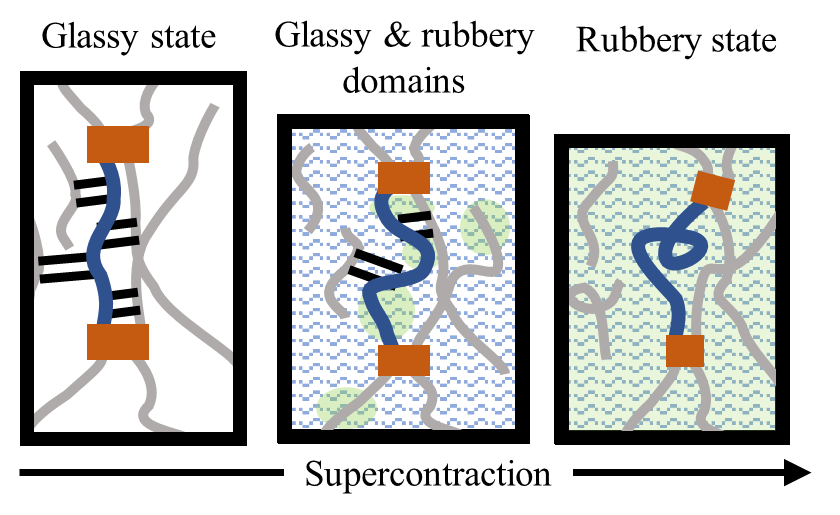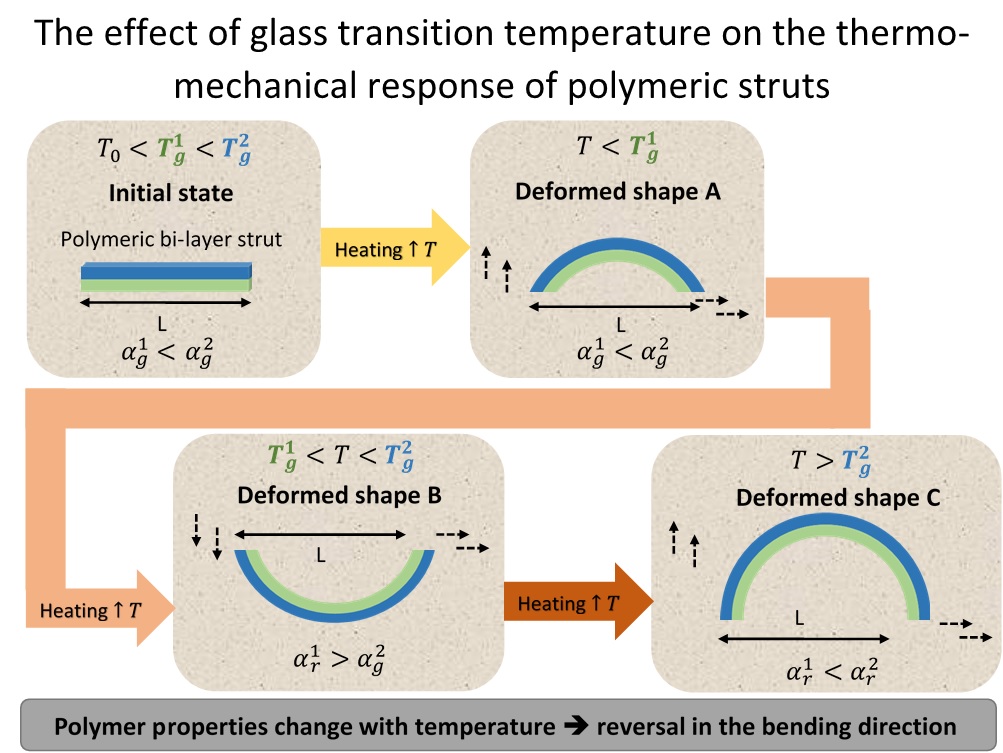Autonomous lifting: Swelling-activated 3D-printed actuators
Stimuli-responsive actuators change their shape or move in response to external cues, such as water uptake. Typically, such systems comprise active (or responsive) components and require external power to initiate actuation, which can limit their performance and implementation. To address these drawbacks, we present a two-component autonomous system. Our actuator combines an active part with a non-responsive structural element capable of lifting more than 40% of its own weight. By decoupling the actuation from structural support, our approach provides a versatile design strategy for autonomous devices that can operate in partially aqueous environments.
Read more here...

Thermo-Mechanics of PNIPAM Gels
Poly(N-isopropylacrylamide) (PNIPAM) is a temperature-responsive polymer that undergoes a distinct transition from a swollen gel to a dehydrated compact network above its lower critical solution temperature (LCST). This unique phase behavior enables precise control in applications such as drug delivery, tissue engineering, and the development of shape-memory materials. In this work we present a microscopically motivated energy-based model to elucidate the mechanism behind the PNIPAM network transition, starting from the chain level to the macroscopic response. The findings from this work provide valuable insights into the molecular mechanisms that dominate the response of PNIPAM gels and provide fundamental tools for the design and optimization of PNIPAM-based gels for various applications.
Read more here...

Swelling under constraints
Simuli-responsive hydrogels that swell under constraints such as spatial geometric confinement are commonly employed in many applications to perform mechanical work. In this contribution, we present a simple 3D-printing based method to quantify the mechanical interactions between the gels and their environment. Our findings underscore the potential of gels in the design of actuators, sensors, biomedical devices, etc…
Read here

The amazing humidity-induced response of spider silk!
Spider silk is a protein material that exhibits extraordinary and nontrivial properties such as the ability to soften, decrease its length by up to ∼60%, and twist upon exposure to high humidity. These counter-intuitive phenomena stem from a transition of a highly oriented glassy phase to a disoriented rubbery phase. In our recent works we derive models that explain the origin of these behaviors. The insights from this work motivate the development of novel biomimetic materials.
Check out our works here...

Thermally induced deformations in multi-layered polymeric struts
Thermally activated structures can be used in various fields such as soft robotics, smart materials, actuators, and self-assembly. The design of such structures requires a
comprehensive understanding of the relations between geometry, material properties,
structure composition, and material response to temperature. In our recent work we derive a model that
can be used as a guideline and an inverse design tool for the selection of
materials and geometries for thermally-activated shape-morphing lattice-based structures that
are capable of achieving multiple shape-shifts with a single stimulus.
Read more

Inflation / extension induced twist
How do we induce twist in tubes without applying a torque?
In nature, such a deformation mode is enabled by material anisotropy. In our new work, we show that isotropic bi-layer tubes with twist incompatible layers can twist upon inflation and extension.
Interestingly, the direction of twist can spontaneously reverse as the load increases, as shown in this video!
Read our paper
The toothpick challenge
Mechanics is fun! Can you figure out how a single toothpick can carry the weight of a water bottle?
Watch on YouTube
